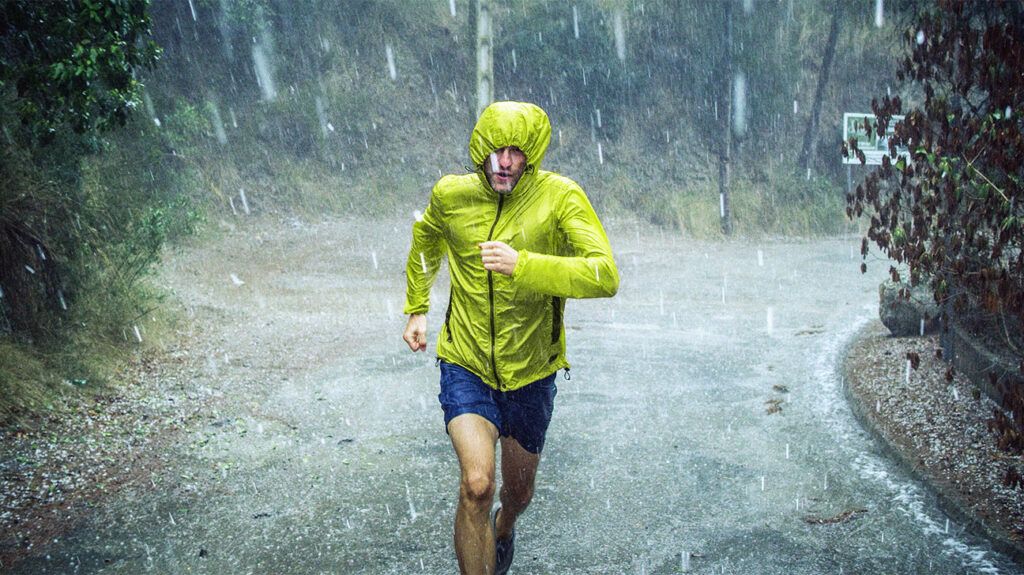Rain may trigger joint pain. It is likely due to changes in barometric pressure, humidity, and temperature, though the exact cause is uncertain.
Joint pain is common among individuals with arthritis and other musculoskeletal conditions. Many people find it worsens with changes in weather, particularly during rainy periods.
Although not fully understood, this phenomenon may relate to changes in barometric pressure, which can cause expansion and contraction in the tissues surrounding joints, leading to pain.
Managing this weather-related discomfort requires a multifaceted approach, including lifestyle modifications, medication, and physical therapy.
This article looks at how to stop joint pain when it rains and other treatments for joint pain.

People can take proactive steps to reduce inflammation and improve joint health, which may stop joint pain during weather changes.
These measures include:
- Maintain a moderate weight: Extra weight puts additional pressure on joints, especially those that bear the body’s weight, such as the hips, knees, and ankles. Losing weight can reduce this pressure and decrease pain.
- Stay active: Regular, low impact exercise such as swimming, walking, or yoga can strengthen the muscles around the joints, increase flexibility, and reduce pain.
- Heat therapy: Applying warm compresses or taking warm baths can help relax tense muscles and alleviate pain.
- Hydration: Drinking plenty of water helps keep the joints lubricated, reducing friction and pain.
Why does pain occur when it rains?
The exact reason why joint pain worsens with rainy weather is not entirely apparent, but several theories exist:
- Barometric pressure: A drop in atmospheric pressure often precedes rain. This change may cause joint tissues to expand, increasing pressure within the joint and exacerbating pain.
- Humidity: High humidity levels can lead to swelling in the joint spaces, increasing pain.
- Temperature changes: Cold, damp conditions may also tighten the muscles around joints, leading to increased pain.
A large 2019 study followed 2,658 participants over 15 months. These individuals had various pain conditions, predominantly arthritis. They recorded symptom information on a smartphone app in real time while scientists tracked the weather at their location using GPS data.
Analysis of this data revealed a clear correlation between pain and variables such as relative humidity, air pressure, and wind speed, with no marked correlation between pain and temperature changes.
Conversely, a 2015 study with 810 participants with osteoarthritis in the knee, hand, or hip demonstrated that daily average humidity and temperature significantly influenced pain levels.
These findings suggest that individual susceptibility to weather-related joint pain varies, and other factors, such as age or overall health, may play a role.
People can help minimize the impact of weather on joint pain by considering the following strategies:
- Dress warmly: Keeping the body warm can prevent the tightening of muscles around the joints. Layering clothing helps maintain body heat.
- Stay dry: Moisture can exacerbate feelings of cold and discomfort. Using waterproof clothing and staying indoors during heavy rain can help manage symptoms.
- Supplements: Some supplements, such as omega-3 fatty acids, glucosamine, and chondroitin, may help reduce joint inflammation and pain. However, consult a healthcare professional before starting any new supplement.
- Plan ahead: Being aware of weather changes can help people prepare and manage their activities, reducing the likelihood of pain flare-ups.
In addition to lifestyle changes and home remedies, other treatments for managing joint pain
- Medications: Over-the-counter pain relievers such as ibuprofen and naproxen can reduce inflammation and alleviate pain. In some cases, a person may require stronger prescription medications. NSAIDs that are similar to ibuprofen and naproxen are also available in topicals, such as Voltaren (diclofenac).
- Joint injections: Direct injections directly into the joint space can relieve severe cases. These may include corticosteroids to quickly reduce inflammation or hyaluronic acid to lubricate the joints, improving mobility and reducing pain.
- Physical therapy: A physical therapist can design a personalized exercise program to strengthen the muscles around joints, increase flexibility, and reduce pain.
- Cognitive behavioral therapy (CBT): This psychological therapy helps people identify and modify the behavioral and emotional triggers that can cause pain.
Additionally, alternative and complementary therapies
Furthermore, practices like tai chi offer gentle, meditative exercises that can improve balance, flexibility, and strength, reducing the risk of falls and associated joint injuries.
Joint pain during rainy weather is common among individuals with arthritis and other joint conditions.
While the exact cause of this phenomenon remains unclear, strategies for managing and reducing this type of pain are well-documented. These include maintaining an active lifestyle, applying heat therapy, staying hydrated, and consulting healthcare professionals for tailored treatment plans.
By adopting a proactive approach to wellness, individuals can significantly alleviate the discomfort associated with weather-related joint pain, improving overall quality of life.
